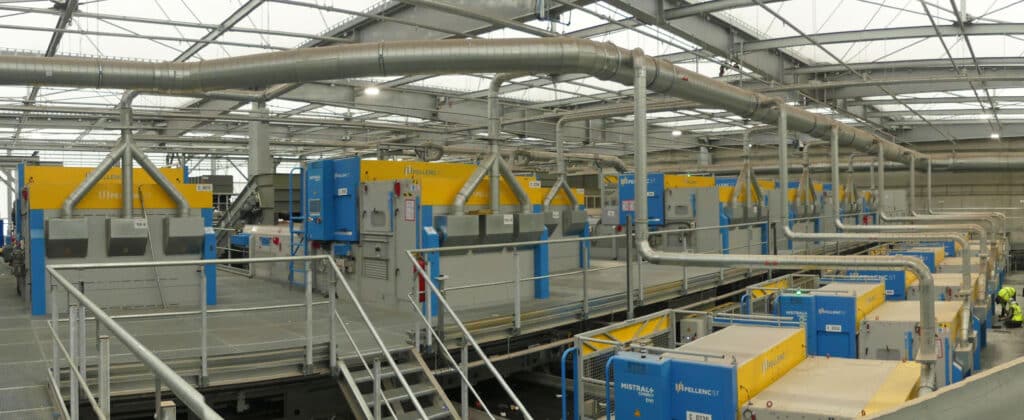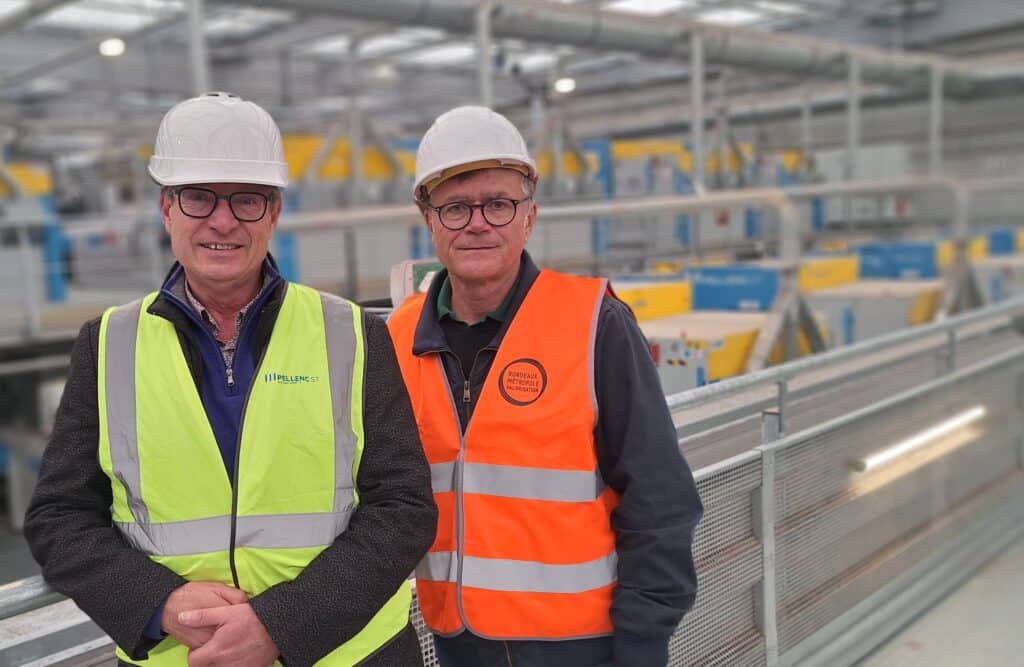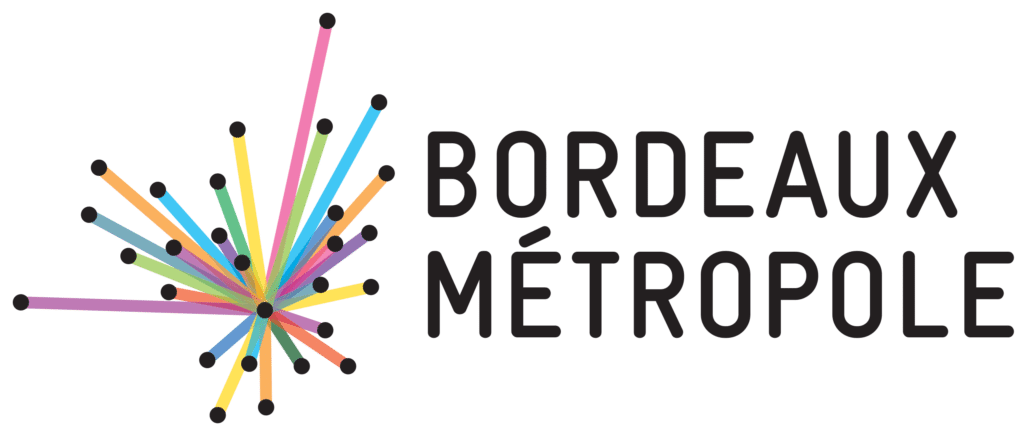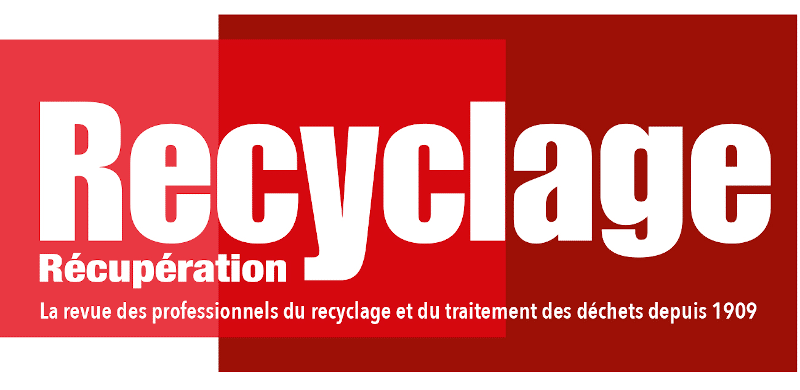Just opened in Bègles, the new Bordeaux Métropole Valorisation sorting center for selective waste is one of France’s top 5 high-performance facilities. It offers extended capacities not only in terms of quantity (52,000 tonnes by 2023) but also in terms of quality for the dozen or so streams sorted and destined for recycling.
At the heart of the process is a series of fourteen optical sorting machines designed by Pellenc ST, the French specialist in the sector. In addition to complying with highly demanding specifications, the operator’s main aim is to bring his facility up to the level of Industry 4.0, based on the latest sorting, detection and data analysis technologies. In this, too, Pellenc ST is at his side.
It’s an ambitious project that Bordeaux Métropole Valorisation is championing. It operates Bordeaux Métropole’s new sorting center, for which €32 million has been invested (including €1.1 million in subsidies from Ademe and €1.1 million from Citeo).
The result: an ultra-modern unit for sorting the packaging waste of some 850,000 residents of the metropolitan area. And who better to measure this technological leap than Thierry Girard, on site since 1997?
“After 24 years in operation, and despite revamping operations in 2010, the existing sorting unit was not in a position to meet the constraints of the extension of sorting instructions (ECT),” explains the Operations Manager of Bordeaux Métropole Valorisation. Increased tonnages, more complex waste, continuity of service, modernization of the process… when the DSP is renewed in 2020, Bordeaux Métropole has opted to build a new state-of-the-art sorting center.
To achieve this, it has called on the expertise of Ebhys, the integrator representing German manufacturer Stadler in France, and Pellenc ST, the French supplier of optical sorting technologies. “For these performance contracts, in compliance with the local authority’s specifications and Citeo’s requirements, we work to define the best technical and economic compromise with both the line operator and the system integrator”, emphasizes Marc Minassian, Sales Director France for Pellenc ST. It’s a long-term process, during which the French manufacturer’s design office draws on both its know-how and the wide range of technical options offered by its optical sorters (six available widths, multi-channel management, material and/or color sorting, stabilization tunnel, ternary sorting, metal detector, etc.).

High-performance sorting
This flexibility of machine operation is as much put to the test by variations in the composition of the flow – “with the rise in online commerce and the decline in print media, the proportion of JRM in fibrous materials has dropped from 30% to 15%”, illustrates Thierry Girard – as by changes in Citeo’s recommendations. “For example, the Flexible Development Flow, which initially concerned only the creation of the LDPE film fraction, now includes PP and complex films”, says Marc Minassian.
Changes to the flow require updates to the material balances assumed for the DSP, and necessitate adjustments to machine settings, resizing of chutes, etc. Pellenc ST machines are known for their ability to easily adapt their settings, but in view of these constant evolutions, they also offer a guarantee of scalability. Equipped with the CNS software platform, all the sorting equipment is “future proof”, meaning that it can integrate future technologies and intelligent sensors as the market develops and demands.
For its part, Bordeaux Métropole demanded a nominal throughput of 17t/h, with guaranteed availability of 92% (excluding scheduled maintenance).
Added to this was the guarantee of performance on the twelve sorted flows (cardboard, EMR, store wholesale, JRM and food bricks for fibrous materials; rigid and flexible development flows, clear PET, PE-PP for plastics; steel, small and large aluminium alloys) as well as compliance with a maximum rate of 10% of recoverables in rejects. Capable of processing 50,000 t/year in two shifts, the Ebhys process uses a single reception hopper (80m3) which regulates the feed to a decartonizer, a large three-section ballistic screen. The large cartons go directly into the sorting cabin, while the 0/300 is divided into two equal flows processed on two parallel lines. “This enables us to maintain production during maintenance periods”, stresses Thierry Girard. Each line begins with a ballistic screen that separates the 0/120 and 120/300. From the 0/120, a star screen separates the 0/50 fines which, after de-ironing and eddy current, are sent for rejection.

Strike force
At the heart of the sorting process, Pellenc ST’s fourteen Mistral+ CONNECT optical sorters separate the materials. Their new Flow Detection system combines focused lighting with a new spectrometer covering an extended NIR/VIS spectrum. “This offers unrivalled sorting finesse, particularly for sorting fibrous materials and separating bottles from trays”, explains Marc Minassian. Seven binary machines are assigned to the purification of 50/120 and 120/300 fibrous materials, to obtain warehouse bulk, cardboard cartons and JRM suitable for recycling.
“Machines dedicated to sorting light materials are systematically equipped with a TurboSorter to stabilize flows on the belt and guarantee performance”, notes Marc Minassian. What’s more, the machines used for the first phase of flat-body purification are not only equipped with a metal detector, but also with the Top Speed option, a process that increases admissible throughputs by 50% at iso performance.
Film sorting is handled by two optical sorters, also equipped with a TurboSorter. Given the high proportion of fibrous materials still present after ballistic sorting, the first machine separates plastic films from fibrous materials (binary mode), while the second (dual-channel, binary) purifies each of the streams. “The finesse of detection and the ease with which settings can be changed enabled us to quickly adapt this sorting phase to Citeo’s new requirements for the Flux Développement souple”, remarks the operations manager.
On the plastics side, four optical sorters are used to sort hollow bodies. To guarantee stream purity, priority is given to positive sorting. “The resulting reiteration loops do not compromise line fluidity,” notes Thierry Girard. Finally, with the aim of not exceeding 10% of reusable material in the rejects, a final ternary sorter ensures the “valo return” of the various fractions.
Identify and correct drifts
Bordeaux Métropole Valorisation has decided to entrust the over-sorting of hollow bodies to two SamurAI sorting robots from Canadian company Machinex. One “cleans” clear PET and the other PE-PP. Lastly, a third robot recovers the recyclable end products from the rejects.
In another innovation, the operator is experimenting with automated quality control. For this purpose, it uses gantry detectors positioned at the jetty of the sorting conveyors. For each flow, this device precisely determines the bale purity rate. “Above all, this system makes it possible to detect any deviations and intervene rapidly upstream”, insists Thierry Girard.
For their part, the Mistral+ CONNECT machines provide a series of sensors to maintain a high level of availability and guarantee sorting quality. The machines collect and transmit data to a secure server. They are then processed and analyzed via Smart&Share, Pellenc ST’s operating assistance tool.
This gives me instant access to data from all machines, enabling me to target corrective actions,” says Thierry Girard. With all these technologies, we’re aiming for Industry 4.0 standards. The idea is to be able to aggregate quality control data with that from optical sorting machines, or even from screens, conveyors, etc. Interfacing the machines could, for example, enable automated correction of drifts”.
This is an approach that Pellenc ST has been supporting and anticipating for several years. “Our Mistral+ CONNECT machines are compatible with all integrator protocols. They can now communicate with each other to turn sorting centers into genuine secondary raw material production units”, concludes Marc Minassian. At Bordeaux Métropole, the sorting of the future is underway.
For more information, contact-us!

